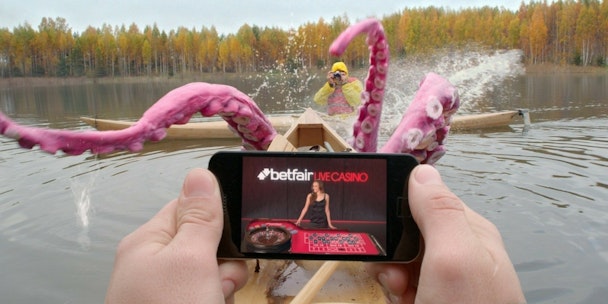Improving the odds: How BetFair, PaddyPower and Ladbrokes should be winning minds
There is no such thing as a safe bet when it comes to online betting, and no single brand that all of us turn to when we fancy a flutter – odds and offers will always sway us.

Online gaming has been top of the news agenda this week, but in this unpredictable, cluttered and fiercely competitive market, brands are continuing to invest significant budgets into capturing consumer attention and building brand fame through a variety of means from broadcast TV advertising to intense digital response campaigns. But can they work harder to improve their odds?
Fame isn’t the only route to fortune…
The IPA has shown that brands should aim for fame in their marketing, through a combination of stand-out creativity, emotional resonance and salient branding. However, recent thinking from the likes of Byron Sharp and Jenni Romaniuk has begun to show that there are more deep-rooted, underlying ways that brands can get stuck in consumers’ heads, building mental availability through exploiting more autopilot behaviour.
To fully understand what brings certain brands to mind for people when they are looking to place a bet, we recently pioneered a cutting-edge new research tool, Headspace. Surveying 500 football bettors (who had all bet online at least once in the previous month), we discovered the main cues that brands can tap into to become ‘stickier’ in the mind, and which are currently winning out in the battle for dominance.
The cues that most prominently bring online football betting to mind at first glance can appear obvious, however to become and remain star players in the space, betting brands should start adapting themselves to these realities. We found that some of the most important cues that brands should actively connect to were to enjoy betting for an intellectual challenge, to enjoy big upcoming events more, and to distract from everyday life. But, over and above everything else, they bet to enhance the excitement of the match-day experience.
Brands should associate themselves more clearly with these cues if they want to be at the front of consumers’ minds when they are ready to place a bet. However, interestingly many brands have failed to build strong connections to these main reasons that on-line betting comes to mind in the first place.
Most brands are failing to make the right mark
Consumers typically love the thrill of betting, but this thrill doesn’t extend to the brands. Indeed, the research showed that all the brands – even the likes of Paddy Power, Coral and Ladbrokes – have little sway with consumers and aren’t connected to the majority of situations and needs that make consumers think of placing a bet.
The problem is that often marketers are too focused on what their brand evokes in consumers’ minds, e.g. brand positionings such as ‘play’, ‘fun’ or ‘supercharged’, rather than also looking at the needs and situations that could bring their brand to mind in the first place.
By building links to optimal sector cues through consistent brand messaging, betting brands can reinforce their position in peoples’ minds and, as a result, grow. For example, Bet365’s Cash Out campaign with Ray Winston may not be the most innovative creative concept, but its clear, consistent salient approach has helped the brand punch noticeably above its weight for Headspace, compared with other creative styles like outright showmanship and irreverence. This success is also partly because it single-mindedly builds just one reason why people bet – to have a risky, enjoyable punt, knowing they can bail and cash-out if the going gets tough. Too many brands get sucked into communicating multiple cues, and none of them stick as a result.
Push the boundaries wherever you can
For those betting brands looking to steal the march on their rivals, there is a lot to be said for looking to evolve ahead of people’s expectations. From Headspace, we found that 58% of online bettors were keen to see the introduction of a purely football-led betting brand. Whilst this might mean a change in marketing strategy, or even the launch of a new brand, it is just one example of the constant demand for innovation in the sector.
Interestingly though, the size of a brand’s high-street presence doesn’t have the big impact you might expect on their mental availability for online betting. External store messaging can easily be harnessed to build associations with key betting cues in people’s minds as they pass by. However, the Headspace data showed that all of the brands with physical networks are currently failing to use this free space to any discernible advantage, perhaps because many store frontages still evoke such a dated, uninviting feel.
This need not be the case – betting brands now have a tool to fully track their reality in people’s minds and put their physical spaces to optimal use in influencing this. These brands can change their image and relevance in people’s lives – they just need to keep on top of evolving theories to attract a more diverse demographic and answer their needs. This would also distance them from the negative image that sometimes overshadows the joy of betting.
Headspace highlights many opportunities for all online betting brands, including the market leaders, to make their marketing work harder and bring them front of mind more readily, when consumers are ready to bet. The question now is which brands will stick and which will twist in a bid to stack the deck in their favour.
Nick Ward is head of planning at creative agency Cubo.
Content by The Drum Network member:

Cubo
Find out more
